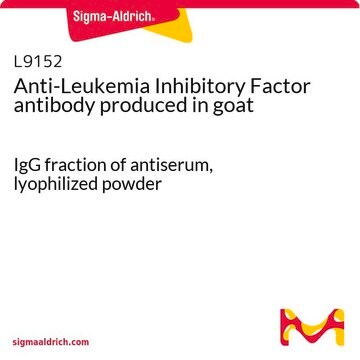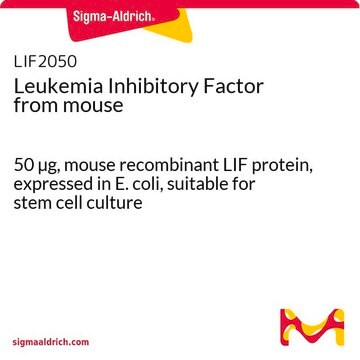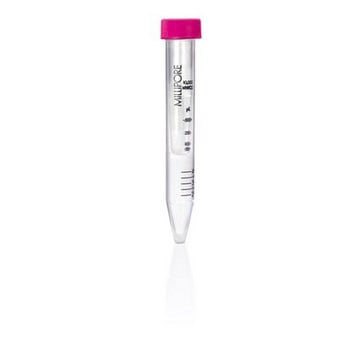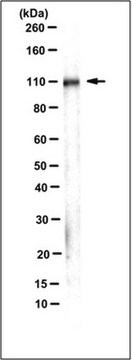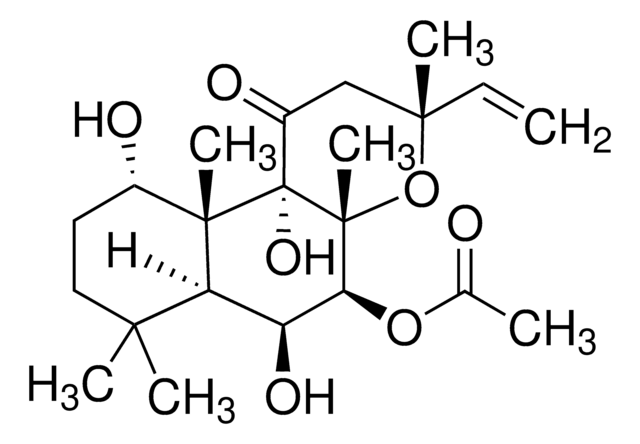추천 제품
생물학적 소스
mouse
Quality Level
항체 형태
purified immunoglobulin
항체 생산 유형
primary antibodies
클론
2H2.2, monoclonal
종 반응성
mouse
제조업체/상표
Chemicon®
기술
ELISA: suitable
western blot: suitable
입력
sample type hematopoietic stem cell(s)
sample type neural stem cell(s)
동형
IgG1
배송 상태
wet ice
타겟 번역 후 변형
unmodified
유전자 정보
human ... LIF(3976)
일반 설명
Leukemia inhibitory factor, or LIF, is a pleiotropic cytokine that is expressed by a wide variety of cells including activated T lymphocytes, monocytes, mast cells and neuronal cells. Human LIF cDNA encodes a 202 amino acid precursor which is processed to yield a 180 amino acid, biologically active glycoprotein with an approximate molecular weight of 38-67 kDa. In addition to its involvement in the stimulation of acute-phase protein during inflammatory processes, LIF has also been implicated in promoting the survival and growth of axons in vitro. LIF signals through the LIF receptor, a heterodimer comprised of a 190 kDa LIFR subunit and the gp130 subunit common to the IL-6, IL-11, CNTF and OSM receptors. Janus tyrosine kinases, JAK1 and JAK2, are activated in response to LIF stimulation, which in turn phosphorylate Stat1 and Stat3 causing their nuclear translocation and the transcription of Stat-responsive genes.
특이성
This antibody is reactive to E.coli and STO derived recombinant murine Leukemia Inhibitory Factor (LIF).
면역원
Recombinant Murine LIF.
애플리케이션
Anti-Mouse Leukemia Inhibitory Factor Antibody, clone 2H2.2 is an antibody against Mouse Leukemia Inhibitory Factor for use in ELISA & WB.
Immunoblotting: a starting dilution of 1-10 μg/mL is suggested.
EIA
Optimal working dilutions must be determined by the end user.
EIA
Optimal working dilutions must be determined by the end user.
Research Category
Stem Cell Research
Stem Cell Research
Research Sub Category
Pluripotent & Early Differentiation
Pluripotent & Early Differentiation
물리적 형태
Format: Purified
Purified Immunoglobulin. Liquid in 0.02M PBS, 0.25M NaCl ph 7.6 with 0.1% Sodium Azide.
저장 및 안정성
Maintain refrigerated at 2-8°C in undiluted aliquots for up to 12 months from date of receipt.
분석 메모
Control
Mouse DA-1a cells
Mouse DA-1a cells
기타 정보
Concentration: Please refer to the Certificate of Analysis for the lot-specific concentration.
법적 정보
CHEMICON is a registered trademark of Merck KGaA, Darmstadt, Germany
면책조항
Unless otherwise stated in our catalog or other company documentation accompanying the product(s), our products are intended for research use only and are not to be used for any other purpose, which includes but is not limited to, unauthorized commercial uses, in vitro diagnostic uses, ex vivo or in vivo therapeutic uses or any type of consumption or application to humans or animals.
적합한 제품을 찾을 수 없으신가요?
당사의 제품 선택기 도구.을(를) 시도해 보세요.
Storage Class Code
10 - Combustible liquids
WGK
WGK 2
Flash Point (°F)
Not applicable
Flash Point (°C)
Not applicable
시험 성적서(COA)
제품의 로트/배치 번호를 입력하여 시험 성적서(COA)을 검색하십시오. 로트 및 배치 번호는 제품 라벨에 있는 ‘로트’ 또는 ‘배치’라는 용어 뒤에서 찾을 수 있습니다.
D Vogiagis et al.
The Journal of endocrinology, 160(2), 181-190 (1999-01-30)
Leukaemia inhibitory factor (LIF) is a pleiotrophic cytokine required for blastocyst implantation in mice. Uterine expression of LIF and that of its receptors has been demonstrated in a number of mammalian species indicating that LIF may have widespread importance in
S G Ren et al.
The Journal of clinical endocrinology and metabolism, 84(8), 2883-2887 (1999-08-12)
Several cytokines regulate thyroid function and may be involved in the pathogenesis of thyroid disorders, including euthyroid sick syndrome. Leukemia inhibitory factor (LIF), a neuroimmune pleiotropic cytokine, was measured to assess its role in hypothalamic-pituitary-thyroid function. Mean circulating serum LIF
K Kami et al.
Muscle & nerve, 22(11), 1576-1586 (1999-10-08)
Using in situ hybridization histochemistry, we characterized the spatiotemporal gene expression patterns of leukemia inhibitory factor (LIF) and glial cell line-derived neurotrophic factor (GDNF), and their receptor components (LIFR, GFR-alpha1, RET) induced in muscle cells, intramuscular nerves, and motoneurons in
M K Carpenter et al.
Experimental neurology, 158(2), 265-278 (1999-07-23)
The isolation and expansion of human neural progenitor cells have important potential clinical applications, because these cells may be used as graft material in cell therapies to regenerate tissue and/or function in patients with central nervous system (CNS) disorders. This
자사의 과학자팀은 생명 과학, 재료 과학, 화학 합성, 크로마토그래피, 분석 및 기타 많은 영역을 포함한 모든 과학 분야에 경험이 있습니다..
고객지원팀으로 연락바랍니다.

